Darley Abbey - Heritage Walk No. 1 - The Boar's Head Cotton
Mills
w/e 17 November 2013
All this week's pictures were taken
with a Kodak DX6490

The village of Darley Abbey grew around the abbey
and the water mills that came later. It now merges imperceptibly
into the northern suburbs of Derby. In fact the Derby Heritage
Walk elsewhere on this site, included an optional extension that
passed through the village via Darley Park but for the purposes
of this series we will concentrate on this relatively small area
of the city and hence have included it in the Village Trails
section. A leaflet, which can be downloaded from the Derwent
Valley Mills website, details five short walks around the village.
This first part of our Village Trail follows the route of the
Heritage Walk No. 1 around the Boar's Head Cotton Mills.
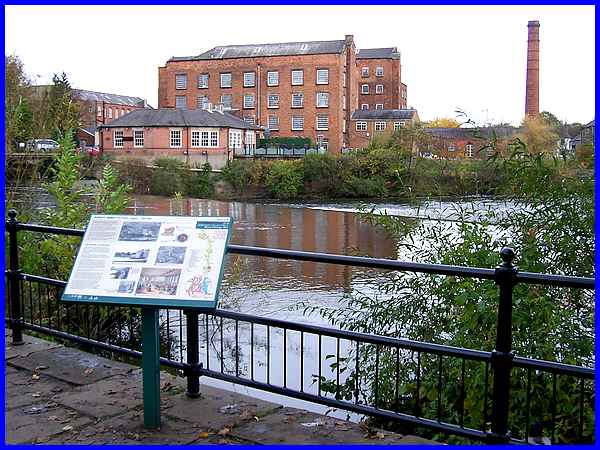
There are three interpretation boards in the village identified
by the letters "A", "B" and "C"
and this walk begins at board "A" on the west side
of the River Derwent. On the opposite bank of the river is the
complex of mill buildings that are the subject of the walk.
|
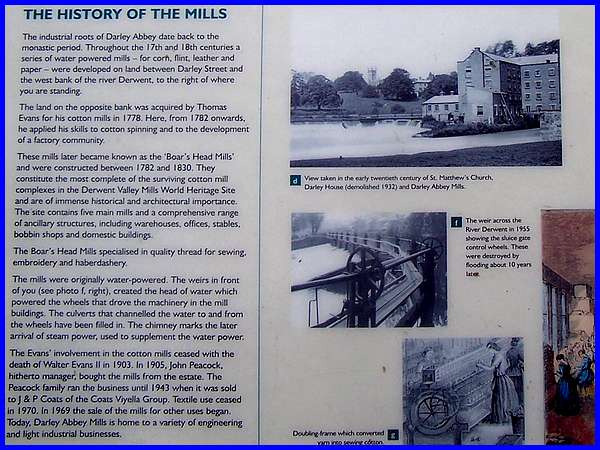
Images on the board are accompanied by a history
of the mills founded by the Evans family. The "Boar's Head"
name of the mills originates from the trademark based on the
family's coat of arms.
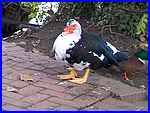 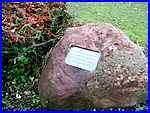 The board sits in an attractive landscaped
area which offers good views of the mills across the river and
which, according to an inscribed boulder (left), was funded by
the Darley Abbey Society, Derby City Council and the Environment
Agency. The landscaped area is often populated by a variety of
water birds and while we were there, we saw at least fifteen
mallards but only one solitary Muscovy Duck (right). The board sits in an attractive landscaped
area which offers good views of the mills across the river and
which, according to an inscribed boulder (left), was funded by
the Darley Abbey Society, Derby City Council and the Environment
Agency. The landscaped area is often populated by a variety of
water birds and while we were there, we saw at least fifteen
mallards but only one solitary Muscovy Duck (right).
|
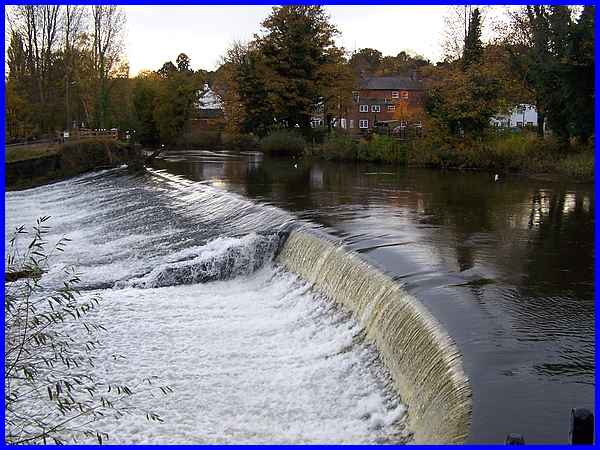
Crossing the bridge to the mills, we had a good view of the weirs.
The sluice gates are no longer there but the force of the river
water that provided the power for the mills to operate is still
obvious.
|
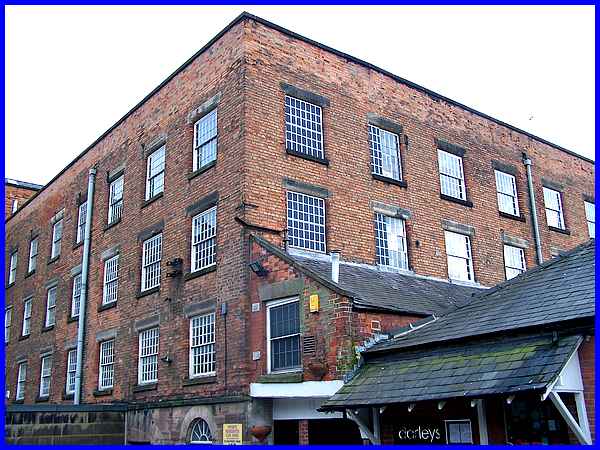
There are five mills plus other ancillary buildings in the complex
and the first after crossing the river is the West Mill. Dating
from 1821 the mill was built using what were the advanced cast
iron techniques. It also has an unusual feature in that some
of the windows are tromp l'oeil paintings that create visual
balance when viewed from a distance.
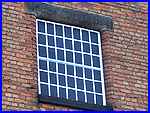 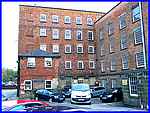 Even close up
it is not that easy to pick out the painted windows (left). Adjoining
West Mill is Long Mill (right) which is a five storey building
and is the oldest on the site dating from 1782/8. Shortly after
completion it suffered a catastrophic fire and was burnt down
only to be rebuilt in 1790, the top floor being used as a schoolroom
providing child workers with a basic education. Even close up
it is not that easy to pick out the painted windows (left). Adjoining
West Mill is Long Mill (right) which is a five storey building
and is the oldest on the site dating from 1782/8. Shortly after
completion it suffered a catastrophic fire and was burnt down
only to be rebuilt in 1790, the top floor being used as a schoolroom
providing child workers with a basic education.
|
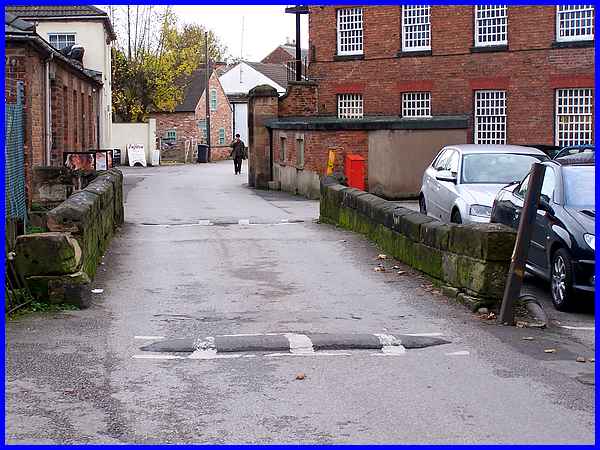
After Long Mill the road through the complex passes between two
low walls which mark the position of a bridge over a former water
course to the water wheels that provided power to the mills.
This was the "head race" and the bridge became known
as the Head Race Bridge.
|
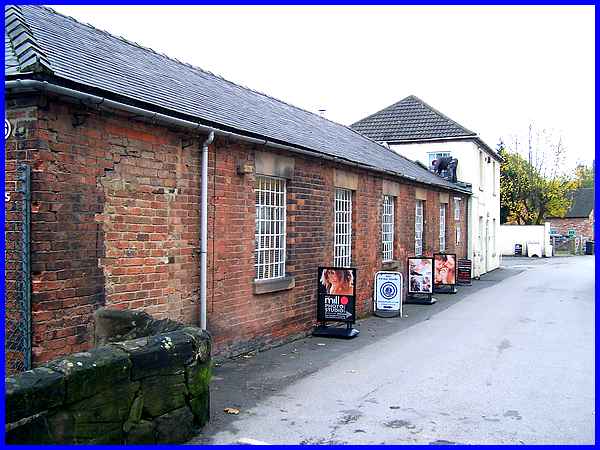
Just beyond the bridge is a long low building where cotton thread
was passed through a gas flame at high speed to burn off any
stray fibres. Consequently the building built about 1862 was
called the Gassing Shed.
|
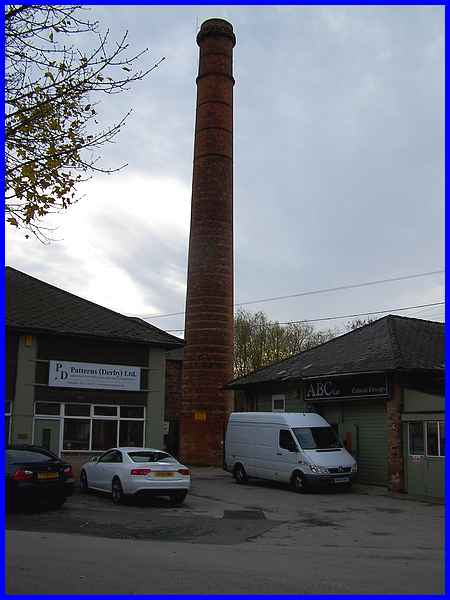
 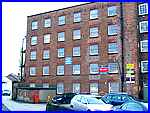 Opposite and adjoining Long Mill is Middle Mill
of 1804/5 (left) a five storey building which in turn is connected
to East Mill (right) of 1811. Among the many other ancillary
buildings on the site many of which are now occupied by small
independent businesses, is a free standing chimney. As the mills
developed, steam replaced water as the driving force to power
the machinery and an engine house was built. Although now demolished
the free standing chimney still remains. Opposite and adjoining Long Mill is Middle Mill
of 1804/5 (left) a five storey building which in turn is connected
to East Mill (right) of 1811. Among the many other ancillary
buildings on the site many of which are now occupied by small
independent businesses, is a free standing chimney. As the mills
developed, steam replaced water as the driving force to power
the machinery and an engine house was built. Although now demolished
the free standing chimney still remains.
|
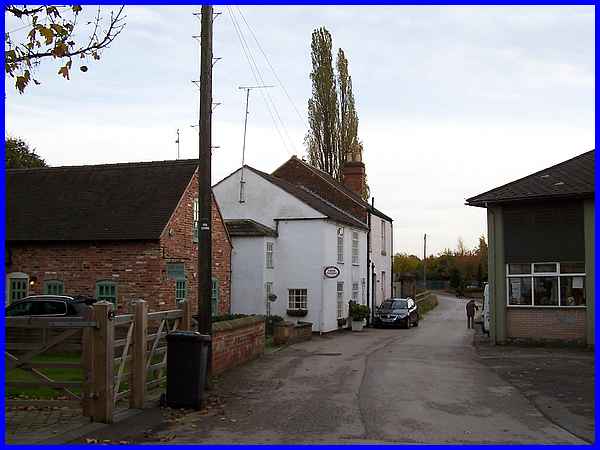
This marks the extent of the walk but the lane continues through
the mill complex as Haslams Lane and is flanked here by more
small businesses and cottages.
|
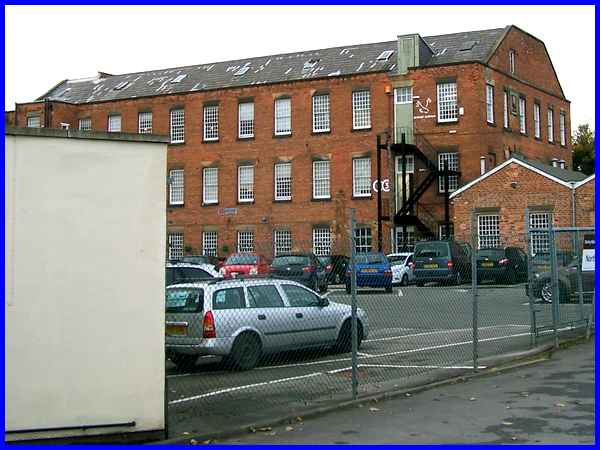
Turning back to retrace our steps to the interpretation board,
the fifth mill on the site, the North Mill built about 1835,
is visible behind the Gassing Shed. Although this one is only
three storeys high, it is still an imposing building of historical
importance and is an integral part, along with the other mills,
of the Derwent Valley World Heritage Site.
|
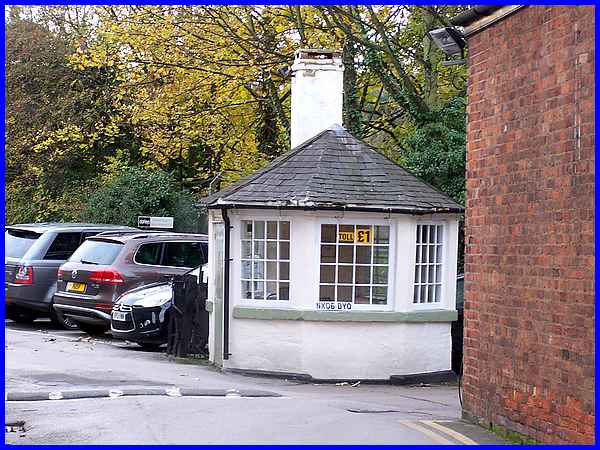
A much smaller building that is now a toll booth for vehicles
crossing the bridge is the Gatehouse which originally controlled
the flow of workers and materials entering and leaving the site.
While we were there it was unmanned but that didn't matter as
we were walking and didn't need to pay to toll anyway.
|

